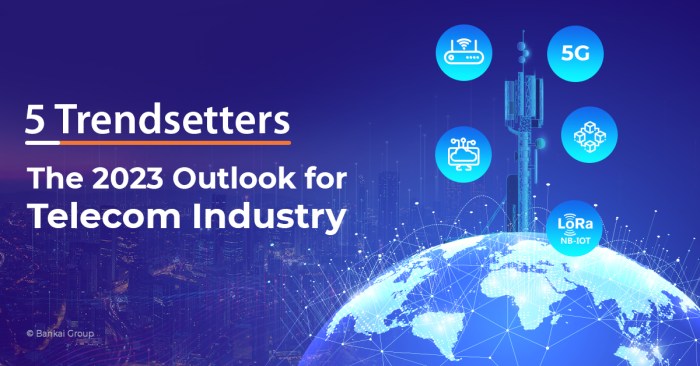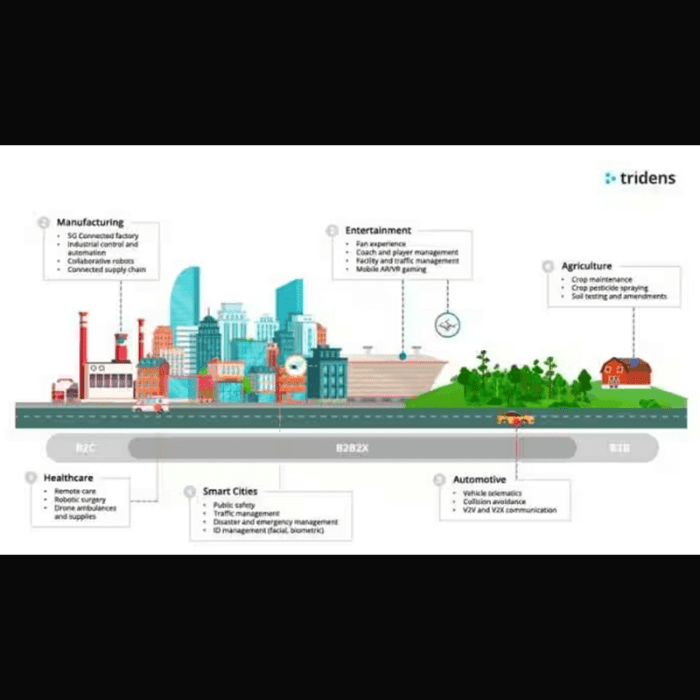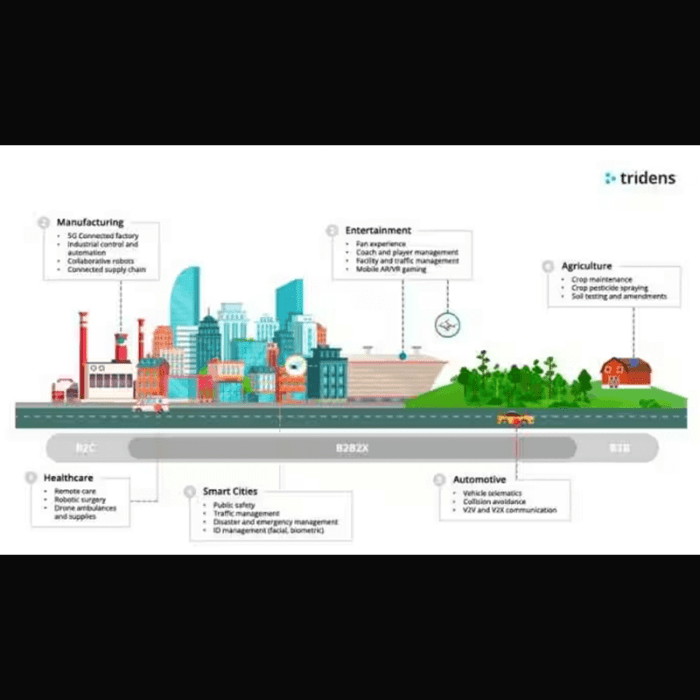Special Interests Threaten Telecoms Future
Special interests threaten telecoms future, potentially hindering innovation and investment in the sector. From environmental groups advocating for stricter regulations on 5G deployment to consumer advocates pushing for fairer pricing models for satellite internet, various stakeholders are shaping the telecoms landscape in ways that could impact the industry’s growth and competitiveness. These diverse interests, with their varying motivations and tactics, represent a significant challenge for telecom companies navigating the future.
This exploration delves into the multifaceted nature of these special interests, examining their potential impacts on different telecom segments, from fixed-line to mobile and internet services. We’ll analyze how these interests might obstruct the development of crucial technologies like 5G and satellite internet. Finally, we’ll explore strategic adaptation strategies for telecom companies, emphasizing proactive engagement and transparent communication to foster collaboration and compromise.
Defining Special Interests: Special Interests Threaten Telecoms Future
Special interests, in the context of telecommunications, represent diverse groups with specific concerns and priorities that may influence or even shape the industry’s development. These groups can vary widely in their motivations, from advocating for environmental protection to promoting consumer rights. Understanding these interests and their potential impact is crucial for telecom companies to navigate a complex regulatory landscape and adapt to evolving societal needs.Understanding the nature of these special interests is vital to predicting their potential effects on the telecom sector.
They can advocate for policies that favour certain technologies, promote specific pricing models, or lobby for regulations that affect network infrastructure. This understanding allows telecom companies to anticipate potential challenges and opportunities.
Types of Special Interests
Various groups can be classified as special interests in the telecommunications sector. These include environmental organizations, consumer advocacy groups, industry competitors, and even government agencies. Each group possesses unique objectives and employs specific tactics to achieve their goals.
- Environmental groups often advocate for sustainable practices in telecommunications infrastructure, such as reducing energy consumption in network equipment and promoting the use of renewable energy sources. They may also lobby for policies that limit the environmental impact of telecommunication towers or the disposal of obsolete equipment.
- Consumer advocacy groups often champion policies that ensure fair pricing, quality service, and transparency in telecommunications. They frequently address issues such as data privacy, net neutrality, and the accessibility of telecommunication services for vulnerable populations. Examples include pushing for clear billing practices and opposing anti-competitive behaviour.
- Industry competitors might lobby for policies that favour their technologies or products, potentially impacting the market share of other companies. This could involve advocating for specific standards or promoting technologies that benefit their specific services.
- Government agencies, in their role of regulating the telecommunications industry, often hold specific interests in maintaining network security, ensuring public safety, and managing spectrum allocation. These interests may be related to national security, public safety, or strategic technology advancement.
Impact on Telecom Segments
The impact of special interests varies across different telecommunications segments. For example, environmental groups may have a significant impact on the deployment of new cell towers, particularly regarding the environmental impact of construction and the energy consumption of equipment. Consumer advocacy groups often focus on issues related to pricing, service quality, and data privacy, which affects both mobile and fixed-line services.
The internet segment is especially vulnerable to lobbying efforts surrounding net neutrality and data usage.
- Fixed-line telephony: Environmental concerns regarding the construction and maintenance of landline networks are often important. Consumer advocacy groups may address issues such as service quality and affordability.
- Mobile telephony: Environmental concerns regarding tower placement and energy consumption are prominent. Consumer advocacy groups are active in areas such as fair pricing, mobile data plans, and roaming charges.
- Internet services: Special interests like consumer advocacy groups, and government agencies are deeply involved in issues such as net neutrality, data privacy, and censorship, which significantly impact the internet segment.
Motivations and Objectives
The motivations behind special interests in the telecommunications sector are multifaceted. They often stem from a desire to achieve specific outcomes related to social, environmental, or economic goals. For instance, environmental groups might aim to minimize the environmental footprint of the industry, while consumer groups strive to protect consumers from unfair practices. Competitors may be motivated by a desire to gain market share, while government agencies focus on maintaining network security and stability.
- Environmental groups seek to minimize the environmental impact of telecommunications infrastructure, promoting sustainability and reducing harmful emissions.
- Consumer advocacy groups aim to protect consumer rights and interests by ensuring fair pricing, quality service, and transparency.
- Industry competitors aim to gain market share and influence the regulatory landscape to their advantage.
- Government agencies strive to maintain network security, manage spectrum allocation, and promote the public interest.
Special Interest Comparison
| Special Interest | Goals | Tactics | Impact |
|---|---|---|---|
| Environmental groups | Reduce environmental impact, promote sustainable practices, limit construction. | Lobbying, public awareness campaigns, legal challenges. | Potential delays in infrastructure development, higher costs for sustainable solutions. |
| Consumer advocacy groups | Fair pricing, quality service, data privacy, transparency. | Advocacy, public awareness campaigns, legal action, media engagement. | Increased consumer protections, potential reduction in profits for telecom companies. |
| Industry competitors | Gain market share, influence regulations in their favor. | Lobbying, promoting their technologies, creating alliances. | Potential market shifts, competitive pressures, changes in service offerings. |
| Government agencies | Maintain network security, manage spectrum, protect public interest. | Regulation, policy development, enforcement. | Clear guidelines and standards, potential impact on market dynamics, potential for increased transparency. |
Threats to Telecoms Infrastructure
Special interests, with varying motivations and agendas, can pose significant threats to the existing telecoms infrastructure. These threats, ranging from regulatory pressures to lobbying efforts, can disrupt service provision, increase costs, and ultimately harm the financial stability of telecom companies. Understanding these threats is crucial for anticipating and mitigating potential negative impacts.
Potential Threats and Their Manifestations
Telecoms infrastructure faces a variety of threats from special interests. These threats can manifest in numerous ways, often intertwining and creating complex challenges. Increased regulatory scrutiny, for instance, can manifest as new, more stringent rules on data privacy, network neutrality, or spectrum allocation. This scrutiny can result in substantial compliance costs and potentially delay or impede necessary infrastructure upgrades.
Lobbying efforts by special interests, often aimed at favorable regulations or preferential treatment, can influence policy decisions, creating an uneven playing field and hindering competition.
Economic Consequences of Threats
The economic consequences of these threats can be substantial. Increased regulatory scrutiny can lead to higher compliance costs, impacting a company’s bottom line. These costs are often substantial and can be spread across a wide range of operational activities. Lobbying efforts can also lead to higher costs, through investments in lobbying and legal representation. Furthermore, these threats can result in lost revenue opportunities due to delays in infrastructure upgrades or changes in market dynamics.
These potential consequences underscore the need for proactive risk management strategies.
Special interests are undeniably a threat to the future of telecoms, with their lobbying often hindering innovation and progress. But what if the next big leap in computing power, like fuel cells for pcs closer or come on , is held back by the same forces? These vested interests, seemingly concerned with short-term profits, could be stifling advancements that would revolutionize not just telecoms, but the entire tech landscape.
Table of Potential Threats and Their Impacts
| Threat | Impact on Revenue | Impact on Profit | Mitigation Strategies |
|---|---|---|---|
| Increased regulatory scrutiny | Potential decrease due to compliance costs and delays in project approvals. For example, a new data privacy regulation could force a telecom company to invest significantly in new security measures, potentially reducing revenue allocated to other areas. | Significant decrease in profit margins due to increased operational costs. These costs might include hiring additional legal staff, developing new compliance systems, and potentially delaying profitable expansion projects. | Establishing strong legal and compliance teams, proactive engagement with regulators, and building a robust regulatory intelligence system to anticipate and adapt to changes. Investing in technology that supports compliance processes and risk management systems can significantly reduce the financial impact. |
| Lobbying efforts | Potential decrease in revenue share due to preferential treatment given to competing interests, leading to a loss of market share. For instance, a competing company, backed by powerful lobbyists, could gain an advantage in securing spectrum licenses, potentially reducing the target company’s market share. | Decreased profitability due to competitive disadvantages and potentially higher operational costs to counter the effects of lobbying. | Engaging in transparent and ethical lobbying practices. This includes carefully monitoring and analyzing the activities of competing interests and implementing counter-lobbying strategies where necessary. Developing strong relationships with key decision-makers and policymakers to advocate for fair and equitable regulations. |
| Protectionist trade policies | Reduced market access and potential loss of revenue from international operations. A trade war could negatively impact a company’s ability to import or export equipment and services, resulting in a loss of revenue. | Reduced profit margins due to decreased international revenue streams and increased costs associated with adapting to protectionist policies. | Advocating for free and fair trade policies through participation in industry organizations and lobbying efforts at international forums. Building strong international partnerships and diversifying supply chains can help mitigate potential losses. |
Impacts on Future Telecoms Development

Special interests, often with legitimate concerns, can significantly impact the development and adoption of new telecommunications technologies. Their influence, while sometimes beneficial, can also create obstacles that hinder innovation and investment, potentially affecting the long-term competitiveness of the telecoms industry. Understanding these potential roadblocks is crucial for policymakers and industry stakeholders to mitigate negative consequences and foster a more favorable environment for technological advancement.The telecommunications sector is a dynamic landscape where new technologies are constantly emerging.
However, the path to widespread adoption is frequently fraught with challenges, often stemming from the interplay of various interests and concerns. These interests, while often motivated by genuine considerations, can inadvertently create hurdles that delay or even derail the progress of innovation. This analysis examines how different special interests can obstruct the development and adoption of new technologies, and explores the repercussions on innovation and the industry’s competitive edge.
Hindrances to New Technology Development
Special interests can impede the development of new telecommunications technologies through lobbying efforts, public campaigns, and legal challenges. For example, environmental groups may oppose the deployment of 5G infrastructure due to concerns about potential electromagnetic radiation impacts, while consumer advocacy groups might push back against new satellite internet services citing concerns about affordability or service quality. These actions can significantly impact the pace of development and adoption, creating uncertainty and potentially driving away investors.
Potential Consequences of Hindrances
The consequences of these hindrances can be profound, impacting innovation and investment in the sector. Delayed deployment of new technologies can result in a slower pace of innovation, potentially hindering the development of more advanced services and applications. This can, in turn, reduce investment in research and development, limiting future opportunities and making the sector less competitive globally.
The long-term consequences could include a loss of market share to competitors who embrace innovation more readily.
Special interests are definitely a concern for the future of telecoms, but it’s also exciting to see innovation like China’s new, massive next-gen internet network, china starts up worlds biggest next gen internet network. While this kind of advancement promises faster speeds and more efficient data transfer, the potential for special interests to stifle competition and control access remains a significant hurdle.
The race to build these cutting-edge networks could be easily manipulated by those who want to limit the market and control the flow of information, impacting the very future of telecoms.
Comparative Analysis of Special Interest Impacts
| Special Interest | Technology | Impact on Development | Impact on Adoption |
|---|---|---|---|
| Environmental groups | 5G | Potential delays in infrastructure deployment due to concerns about electromagnetic radiation. Increased scrutiny and regulatory hurdles can lead to higher development costs. | Reduced public acceptance of 5G infrastructure due to perceived health risks, potentially limiting the uptake of 5G services and hindering the rollout of advanced applications. |
| Consumer advocacy groups | Satellite internet | Potential for stringent regulations concerning affordability, quality of service, and coverage. Demands for extensive testing and consumer-centric features could increase development costs and timelines. | Potential for limited consumer adoption if services are perceived as overpriced or unreliable. Concerns about data security and privacy could hinder widespread acceptance. |
| Lobbying groups representing existing telecom providers | Fiber optic networks | Potential for opposition to fiber optic expansion to maintain their market dominance in existing infrastructure. Efforts to delay or block the development of competing infrastructure could delay the adoption of this technology. | Reduced competition and slower adoption of fiber optics, leading to higher prices and less choice for consumers. |
Strategies for Adapting to Challenges

Telecom companies face a complex landscape, where the demands of diverse special interest groups intertwine with the need for technological advancement and profitability. Navigating these competing interests requires proactive strategies, careful consideration of stakeholder concerns, and a commitment to transparency. Successful adaptation hinges on understanding the nuances of these groups and developing mutually beneficial solutions.Adapting to the challenges posed by special interest groups requires telecom companies to adopt a multifaceted approach.
This includes designing strategies that address the concerns of these groups while ensuring the company’s long-term viability and maintaining the integrity of its network infrastructure. This requires understanding the specific interests of each group and developing strategies that address their concerns without compromising the company’s core values or objectives. Proactive engagement and transparent communication are vital components of this process.
Designing Strategies for Navigating Challenges
Telecom companies can employ several strategies to address the challenges posed by special interest groups. These include thorough analysis of the group’s concerns, the development of tailored solutions, and proactive engagement through open communication channels. Understanding the underlying motivations behind the concerns of each group is crucial in creating effective solutions.
Special interests are definitely a threat to the future of telecoms, with lobbying and regulations potentially hindering innovation. However, enterprises are finding new solutions to protect themselves, like the new marketplace for anti-spyware protection. This enterprise new marketplace for anti spyware protection could be a crucial step forward, but it’s still a challenge to balance these crucial enterprise needs with the wider implications for telecoms’ future and the potential for special interests to still control the outcome.
Examples of Successful Strategies
Several telecom companies have successfully navigated similar challenges in the past. For instance, some companies have implemented community outreach programs to address concerns about network expansion. Others have collaborated with environmental groups to minimize the environmental impact of their operations. A notable example involves a company that partnered with a local community group to address concerns about potential job displacement during network modernization.
The company offered retraining programs and job placement assistance to affected workers. These initiatives not only addressed the concerns of the special interest groups but also fostered positive community relations.
Importance of Proactive Engagement
Proactive engagement with special interest groups is crucial for building trust and fostering collaborative relationships. It involves actively listening to the concerns of these groups and responding to their feedback in a timely and transparent manner. This approach builds rapport and allows companies to identify potential issues before they escalate into larger conflicts. By proactively engaging with stakeholders, telecom companies can better understand the needs and expectations of various groups, leading to more effective and mutually beneficial outcomes.
Role of Transparent Communication
Transparent communication plays a vital role in managing stakeholder relations and fostering trust. This involves clearly communicating the company’s plans, strategies, and decision-making processes to all stakeholders. Providing regular updates, responding to concerns promptly, and being accessible to questions are essential aspects of transparent communication. Such transparency helps to mitigate misunderstandings and fosters a sense of shared understanding between the company and the special interest groups.
Strategies for Fostering Collaboration and Compromise, Special interests threaten telecoms future
Fostering collaboration and compromise with special interest groups requires a willingness to listen, negotiate, and find mutually acceptable solutions. Telecom companies should create platforms for dialogue and discussion, allowing representatives from diverse groups to share their perspectives and concerns. The development of joint working groups, the establishment of feedback mechanisms, and the creation of shared decision-making processes can enhance collaboration.
This approach promotes understanding, reduces conflict, and enables the development of solutions that address the needs of all stakeholders. Compromise is a key element in such collaborative efforts. Companies should be willing to adapt their plans and strategies based on the input received from various groups to reach a mutually beneficial outcome.
Illustrative Examples
Special interests wield significant influence in shaping telecoms policies and practices. Understanding these influences is crucial to comprehending the challenges facing the industry and developing effective strategies for navigating them. Their impact is often multifaceted, affecting everything from infrastructure development to pricing models and regulatory frameworks.These influences can manifest in various forms, ranging from lobbying efforts by corporations to advocacy by consumer groups.
The interplay between these diverse interests creates a complex landscape where the pursuit of individual goals can sometimes clash with the broader interests of the telecommunications sector and its users.
Real-World Examples of Special Interest Influence
Special interests have historically exerted considerable influence on telecoms policy. Examples include:
- Cable television companies often advocate for regulations that limit the ability of fiber-optic providers to enter their markets, protecting their existing infrastructure and revenue streams. This has frequently resulted in slower rollout of faster internet speeds and limited competition. The impact on consumers is a reduced choice of providers and higher prices.
- Certain industries, like video game developers, may lobby for specific bandwidth allocation to support their services, while other sectors may advocate for pricing structures that benefit them at the expense of consumers.
- Consumer advocacy groups can exert significant influence on policies concerning data privacy, net neutrality, and affordability of services. These groups’ efforts often shape regulatory frameworks and public perception of telecom companies.
A Case Study: The Impact of Anti-Competitive Practices
One prominent example of negative impact is the anti-competitive practices employed by some established telecom companies. These companies often leverage their existing infrastructure and market dominance to hinder the entry of new competitors. This can lead to higher prices and reduced innovation, negatively impacting consumer choice and overall industry development. For instance, companies might engage in tactics like strategic pricing or bundling of services that make it difficult for new entrants to gain a foothold in the market.
The result is a less competitive environment, often limiting consumers’ access to better services and fairer pricing.
Strategies for Telecom Companies to Address Special Interests
Telecom companies can strategically engage with special interests to mitigate negative impacts and create a more favorable regulatory environment. This requires a proactive and multifaceted approach:
- Engage in early dialogue with stakeholders. This includes proactively engaging with policymakers, industry associations, and consumer groups to understand their concerns and articulate the company’s perspective. Early engagement allows for the identification of potential conflicts and facilitates the development of mutually beneficial solutions.
- Transparency and communication. Maintaining open communication channels with all stakeholders is crucial. Transparency regarding company practices, pricing models, and network expansion plans can build trust and address concerns proactively. This demonstrates the company’s commitment to responsible business practices and consumer welfare.
- Focus on long-term sustainability. Demonstrating a commitment to responsible practices, such as environmental sustainability and ethical data handling, can resonate with special interests and create a more positive public image.
Illustrative Scenario: Addressing Concerns About Network Expansion
Imagine a telecom company planning a significant network expansion into a new region. This expansion could encounter resistance from existing providers or local governments concerned about potential negative impacts on their businesses or infrastructure. A strategic approach for the company would involve:
- Open dialogue with local stakeholders. This includes proactively meeting with local authorities, community groups, and existing providers to understand their concerns and potential solutions.
- Demonstrating value creation. The company can highlight the potential economic benefits of the expansion, such as job creation, improved connectivity, and increased economic activity. A well-defined plan emphasizing positive community impact is crucial.
- Transparent communication and engagement. This includes sharing detailed plans, environmental impact assessments, and potential employment opportunities to demonstrate the company’s commitment to local welfare.
Final Summary
In conclusion, special interests are exerting considerable influence on the telecoms industry, potentially shaping its future trajectory. The potential for conflicts of interest and competing agendas underscores the need for a nuanced understanding of these various influences. Telecoms companies must navigate this complex landscape strategically, fostering collaboration and compromise to ensure sustainable growth and innovation. The future of telecommunications hinges on the ability of these companies to adapt and respond effectively to the multifaceted pressures arising from special interest groups.







